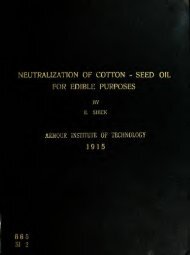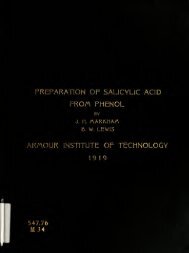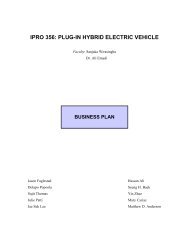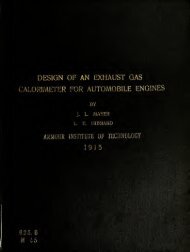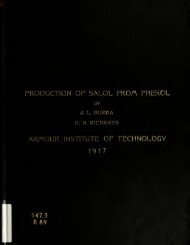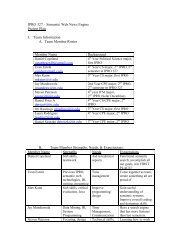Glycerol and spent lye clarification - Illinois Institute of Technology
Glycerol and spent lye clarification - Illinois Institute of Technology
Glycerol and spent lye clarification - Illinois Institute of Technology
Create successful ePaper yourself
Turn your PDF publications into a flip-book with our unique Google optimized e-Paper software.
sulphate, also <strong>of</strong> nickel, cobalt, <strong>and</strong> copper<br />
sulphates is explained by the fact that those<br />
salts combine with three molecules <strong>of</strong> glycerol<br />
to form complex compounds <strong>of</strong> the general<br />
formula (M . 3 C H )S0 . HO. For these<br />
3 O o 4- c<br />
compounds Grxin <strong>and</strong> Bookish proposed the name<br />
glycerinates, to distinguish them from the<br />
metallic glycerides (glyoeroxidee) mentioned<br />
above. The glycerinates are precipitated<br />
from their aqueous solutions by alcohol as<br />
amorphuouB substances.<br />
It has been pointed out that glycerol o<br />
is able to form mono-acid <strong>and</strong> di-acid esters.<br />
These are usually described as monoglyceridee<br />
or diglycerides. They do not occur in nature.<br />
The most important esters <strong>of</strong> glycerol<br />
are those resulting from the combination <strong>of</strong><br />
glycerol with fatty acids.<br />
<strong>Glycerol</strong> also forms esters with inorganic<br />
acids, the most important being those formed<br />
with carbonic, sulphuric, nitric, phosphoric,<br />
boric, <strong>and</strong> arsenious acids. Some <strong>of</strong> these<br />
36




